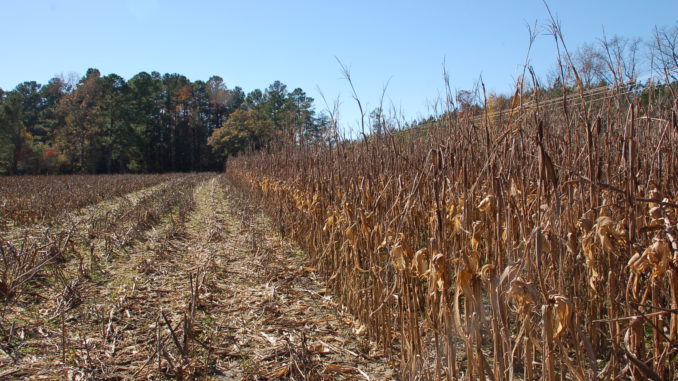
From small bahia grass seed to large corn kernels, doves will eat almost any kind of seed. They are right at home in North Carolina’s agriculture belt with soybeans, corn, sorghum, wheat, sunflower and millet grown commercially each year. Corn is generally the only crop available for hunters at the start of the season. Short-maturing hybrid corn will be cut between mid-August through September. Luckily, the U.S. Fish and Wildlife Service allow landowners to manipulate crops for the benefit of doves and other wildlife.
Doves love fresh-cut fields due to the scattering of seed on clean–cut ground. Landowners can legally manipulate crops via bush-hogging and/or disking to scatter seeds. Often, landowners plant small patches of sunflower, brown top millet or sorghum around their main agriculture fields for the benefit of doves and hunters.
Dove plots should be planted early enough that seeds mature by the middle of August, and farmers should mow 20 to 30 percent of their crop in alternating regions. As the season progresses and seeds are eaten, more rows can be mowed to keep birds around, or remaining seeds can be saved until the late season when the migrating flock arrives.
Beyond the traditional grain and seed crops, dove hunters can have success in recently abandoned truck-farming operations. Fields used for watermelon, cantaloupe, butter beans, cucumbers and peas can be mowed and/or disked to expose seeds. Doves will not think twice about using these areas to get their nutrition.




Be the first to comment